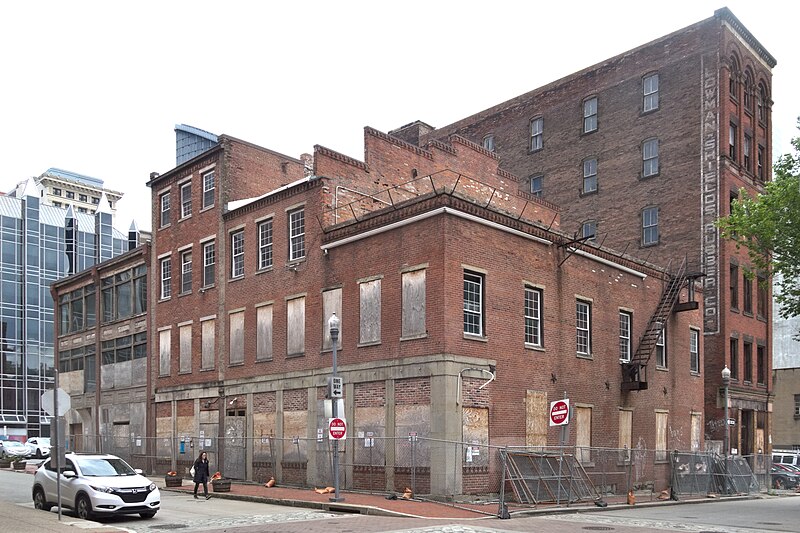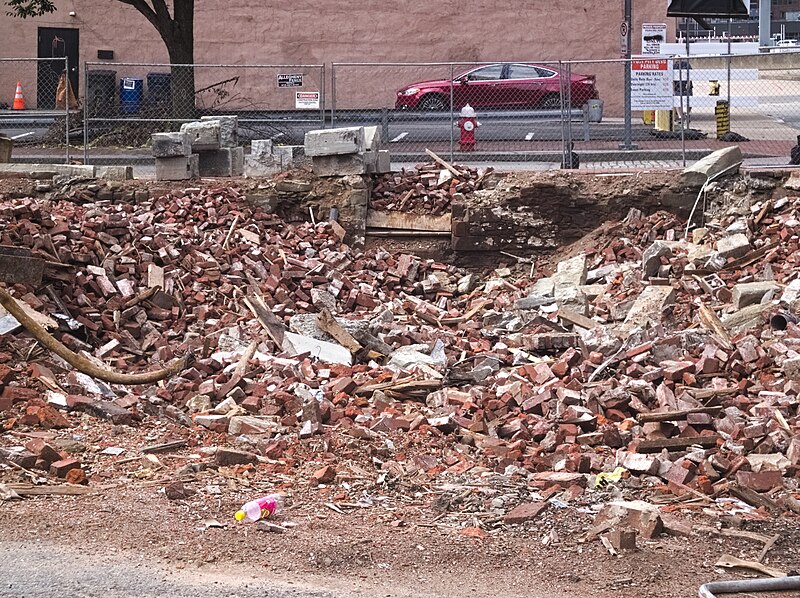
A pair of stylish Victorian houses opposite Arsenal Park on 40th Street. The one on the right is in the high Queen Anne style, with a turret and odd-shaped windows and a wraparound porch. The one on the left is smaller and more restrained, but only relatively.
These two houses have both had quite a bit of work put into them in the past few years. A quarter-century ago, before Lawrenceville began to be a trendy neighborhood, Father Pitt captured these same two houses with a plastic box camera.

Several things have changed, especially in the house on the left. The porch has been removed; it looks as though it was a later addition, and the removal may have restored the house to something more like its original appearance. The sawed-off Gothic peak on the third floor has been restored. The glass blocks by the front door are still there, but perhaps that is how we know this is a Pittsburgh house and not one in Baltimore or Boston. As for the house on the right, it has been cleaned and restored to picture-perfect condition.















































